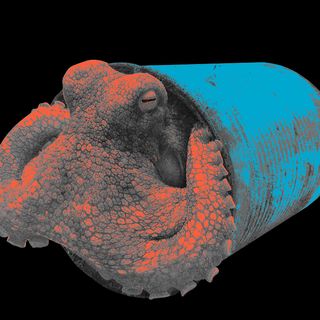Scientifically speaking, life is hard to measure, and harder to identify. A growing consensus among scientists is we know of only an estimated 10% of species that currently live on Earth. And new research pushes this idea to show how hundreds of previously unidentified mammal species are currently out there in our eye line — without a name, identity, categorization — seemingly existing beyond the “tree of life.” In other words, species are merely waiting to be found “in plain sight.”
“Based on our analysis, a conservative estimate would be that there are hundreds of species of mammals worldwide that have yet to be identified,” said Bryan Carstens, professor of evolution, ecology and organismal biology at Ohio State University, who co-authored the study. Carstens and his colleagues focused on mammals in particular owing to their relatively large size. Plus, since they are important to humans as a source of food and companionship, the researchers presumed that a good share of mammals would have been identified so far.
The study, published in the journal Proceedings of the National Academy of Sciences on Monday, found otherwise. The dataset involves a considerate analysis of millions of genetic sequences of mammals like bats, rodents, shrews; along with this, the researchers looked at their environment and habitat. The study found that most mammalian species are incorrectly classified due to their physical appearance.
In the modern history of evolutionary biology, scientists have used something called “DNA barcoding.” This is a technique that identifies and differentiates between flora and fauna based on their unique genetic markers. A lot of times plants and animals are categorized as one species, but genetic analysis has helped separate groups despite their deceptive similarity. This is how two newly discovered see-through frogs in Ecuador came to be identified. Or in 2018, scientists discovered the little brown bat was in fact five separate species — clubbed together by virtue of their proximity to one other.
The big picture then is that the total number of species on Earth — presently, an estimate that inches towards 8.7 million — could be much higher than previously thought. Pushing this idea forward, researchers of the present study, with the help of a new model, attempted to predict where these unidentified species were most likely to be found. For instance, some “hidden” mammal species were more likely to reside in wider geographic ranges with high precipitation and temperature variability.
“We believe that identifying and describing the many undiscovered species on Earth is crucial to aiding the preservation of its biodiversity,” they wrote in The Conversation.
Related on The Swaddle:
Scientists Discover ‘First True Millipede’ With Over 1,000 Legs
Their research raises two trends in scientific discovery. One, the crux of the issue lies in the flaws in our existing systems of classification. The challenges with identifying new species, and subsequently not being able to discover and protect more, are articulated through the Linnean shortfall; named after Karl von Linné, it refers to the limited knowledge of biodiversity, and how there remains a discrepancy “between formally described species and the number of species that actually exist.”
“It remains unclear whether poor research methodology, disagreements on how to define a species, or other factors are to blame for this gap,” the researchers wrote. That we are actively overlooking thousands of species just because our taxonomy doesn’t support their existence is indeed concerning. It is no wonder then scientists in recent years have pushed for more investment in maintaining taxonomies and data sharing — so that the quest to identify new species is more seamless.
Two, this gap in knowledge comes with pitfalls. “That knowledge is important to people who are doing conservation work. We can’t protect a species if we don’t know that it exists. As soon as we name something as a species, that matters in a lot of legal and other ways,” added Carstens.
We’re living in a time characterized as Earth’s sixth mass extinction due to human-induced climate change. One step to mitigating the crisis of extinction is to perhaps map what creates our biodiversity. Naming, identifying, and understanding the species on this planet is a rudimentary first step.




